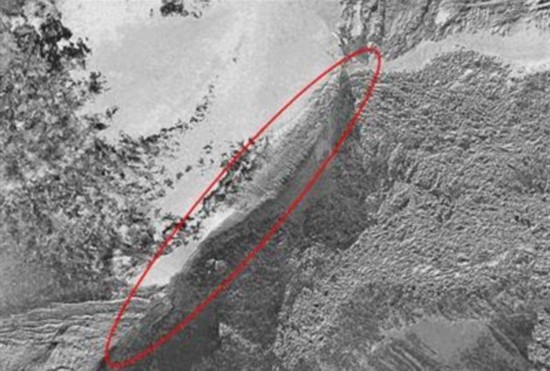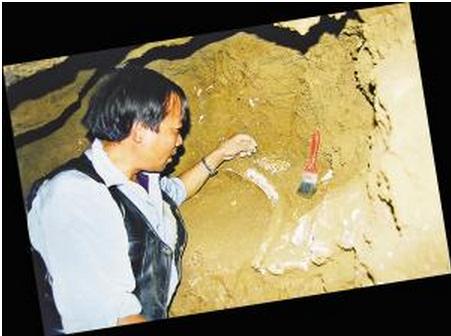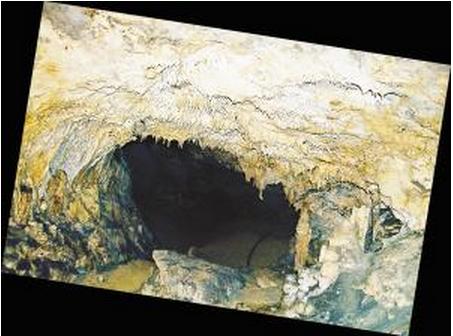Archaeological Findings: China's Noah's Ark was the Three Gorges at the coldest time 10,000 years ago

Exploration team discovers the debris of Noah's Ark
If you've ever seen Ice Age, you must remember that mammoths and their little ones are leaving their homes to find refuge. If they are smart enough, they will definitely come to Chongqing because in the well-known series of cartoons from the 20th Century Fox, Ice Age, Mammoth and its friends have gone around to escape the cold frozen world. Escape, no goal to find the ideal sanctuary. In fact, they can come to survive in the Three Gorges area. The latest research shows that in the coldest period of human history, the Three Gorges region became the only animal in China Noah's Ark.
Yesterday, a Chongqing Evening News reporter learned from the Three Gorges Museum’s Ancient Human Research Institute that, after several years of research on Wushan Labyrinth Cave, researchers successfully restored the paleoenvironment, paleoclimate, and paleoecology of the Three Gorges area more than 10,000 years ago. This latest research result was written by five research fellows Pang Libo and Chen Shaokun, etc., in the paper “An Analysis of the Paleoenvironment and Chronology of the Mammalian Caves in the Three Gorges Area in China†and published in the international authoritative journal “International Quaternaryâ€.
Caverns dug a lot of fossils
For the researchers to provide conclusive evidence, this is a maze hole in Maping Village, Baolong Town, Wushan County.
The maze hole is 80 kilometers away from Wushan County. Between the two majestic mountains, Baolong River passes through the mountains, and the labyrinth cave is on the river. From the entrance that is more than a meter high, a spacious “big living room†appears before the eyes, which is the main hole of the maze hole.
According to researcher Chen Shaokun, the main hole is conical, more than 30 meters high, and several tens of meters wide, with stalactites of various shapes. In addition to the main hole there are four branches. The labyrinth cave was first known to outsiders in 1999, when relevant authorities were preparing to carry out tourism development for the cave. That year, archeologists discovered a large number of fish, reptiles, insectivores, wingers, rodents, primates, meat, proboscis, cloven-hoofed and cloven-hoofed animals in caves. fossil. It was determined that the date of fossilization of the site was 13150±190 years ago, which belonged to the Late Pleistocene Period of the Quaternary Period.

Archaeologists excavate fossils in a labyrinth cave
Part of Fossil Chongqing First
How can different types of fossils be buried together in a labyrinth cave? Chen Shaokun analyzed that these animals should all live in the mountains on the edge of the Yonglong River after their death. After death, they were washed into the labyrinth cave by water.
It has been identified that there are 47 species of fossils unearthed in the labyrinth cave, of which 45 species are mammals. Among these animals, there are common fossils of bats, hedgehogs, macaques, and wild boars, as well as the hyena fossils now living on the African grasslands. They are known as four different elk fossils, and five species of extinct fossils, including pasteurized. Giant pandas, saber-toothed elephants, South China giant pelican, Meishi rhinoceros, and horn antelope.
“Many of these species were first discovered in Chongqing,†Chen Shaokun said. For example, the well-known elk has been living in the southeast region for the first time in Chongqing. There is also a pika that has never appeared south of the Yangtze River.
More specifically, the researchers also discovered a lizard fossil called the iguana. Before the academic community generally believed that the lizard was extinct 45 million years ago, this discovery in the labyrinth cave will overturn this conclusion.
Animals come from three directions
An interesting phenomenon in the sorting of animal fossils has attracted the attention of researchers. Of the 45 species of mammals, not all species are in the Three Gorges area, and 11 species are exotic species, including Meishi rhinoceros, and horn antelope. As well as elk, moose and so on.
"These animals are not native species in the Three Gorges area." Chen Shaokun said that the extinct antelopes mainly live in the northern part of Hebei Province to Baikal Lake in Russia, and they live mainly in Tibet or northern regions.
Through research, the researchers found that these animals mainly came from three major directions: from North China and northeast, they had Meishi rhino, Turn antelope and Northeast red deer; from the east, there were elk; from the west, the Tibetan plateau migrated. The largest number of animals came from mainly small mammals, including Tibetan pika.
After a long journey, how did the animals move in? How did the animals in the North cross the Yangtze River? Chen Shaokun said that only the current migration direction is known, and the specific migration route is not clear. As for the animals from the north, because the Yangtze River was dry at that time, the river water was less, and in addition to the cold weather, it was very likely that the river would freeze.
The Three Gorges became a paradise
Why did these animals leave their hometowns and travelled to the Three Gorges area? “Because here is the last glacial period known so far, animals are the only sanctuary for them.†Researcher Pang Libo explains, as described in the film “Ice Ageâ€. The earth thousands of years ago was in the coldest period of 2.6 million years. It is also the coldest period since human activities. The earth is covered with glaciers everywhere. Animals have to leave their homes in order to find suitable homes for survival.

Labyrinth hole entrance
The Noah's Ark that the animals eventually took is the Three Gorges area. Chen Shaokun said that for a long time, the academic community has two views on the existence of glaciers in the Three Gorges area: one considers that there are large glaciers in the Wushan Mountains, and the other considers that there are no glaciers in the Three Gorges area, and the ice age has no effect on the Three Gorges area.
This study shows that the ice age has a great influence on the Three Gorges area, but the impact is not as large as in the north. Although it was also affected by the cooling of the entire environment, due to its location near 30 degrees north latitude, the Three Gorges area is not as cold as the north, and the temperature is relatively suitable for animals. At the same time, the Three Gorges area has many mountains, a wide gap, and a variety of climates. When the weather turns cold, the animals migrate to the river valley in the foothills; when the spring is warm, they return to the mountains. In this way, the Three Gorges area became a paradise for animals. Chen Shaokun said that this was also the only animal sanctuary in China at the time.
Sewing Thread Cone Winding Machine
Spun Rayon Yarn Winding Machine,Yarn Coning Machinery,Sewing And Embroidery Machine,Acrylic Yarns Winder Machine
Ningbo Yongfu Textile Machinery Co., Ltd. , https://www.yfwinders.com